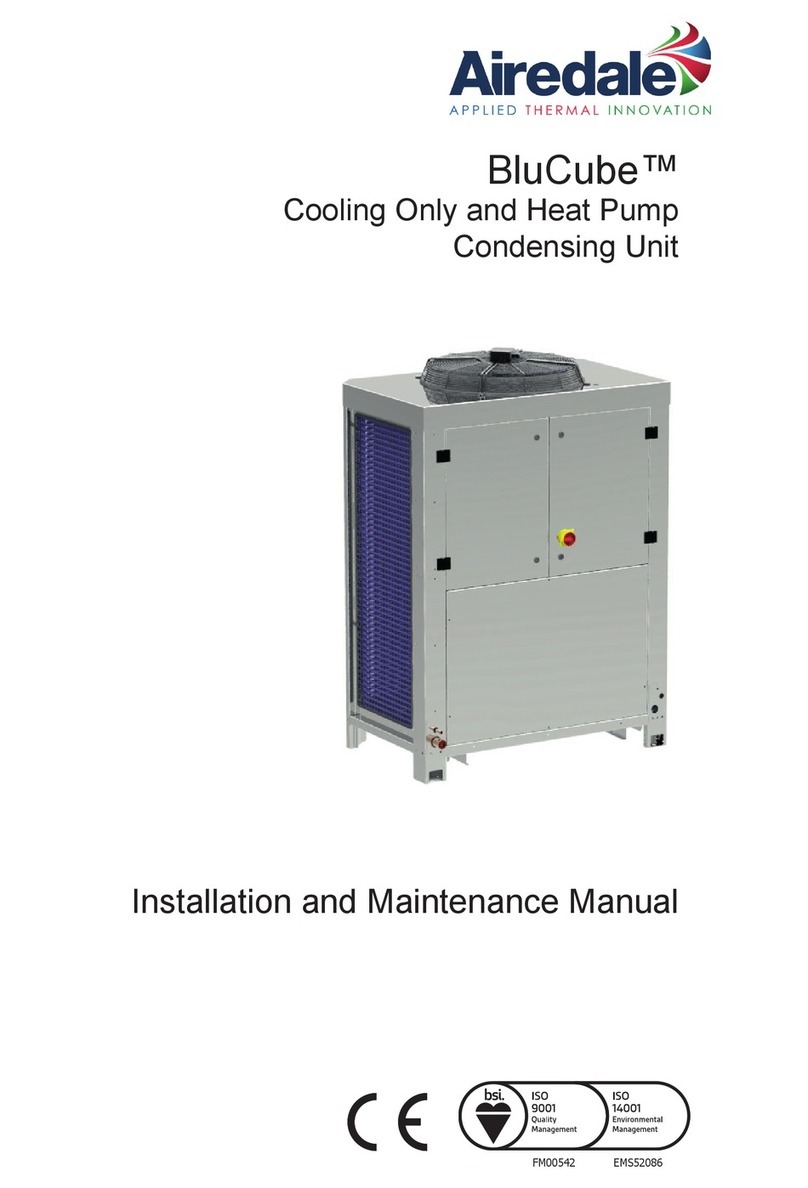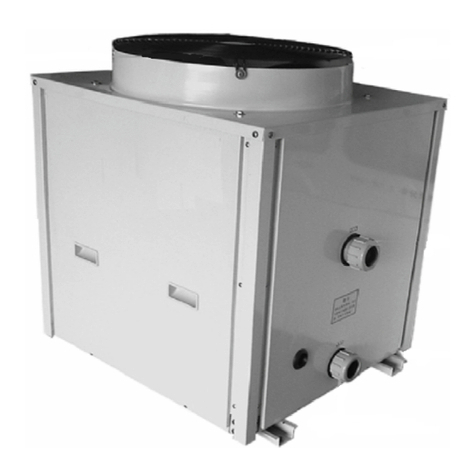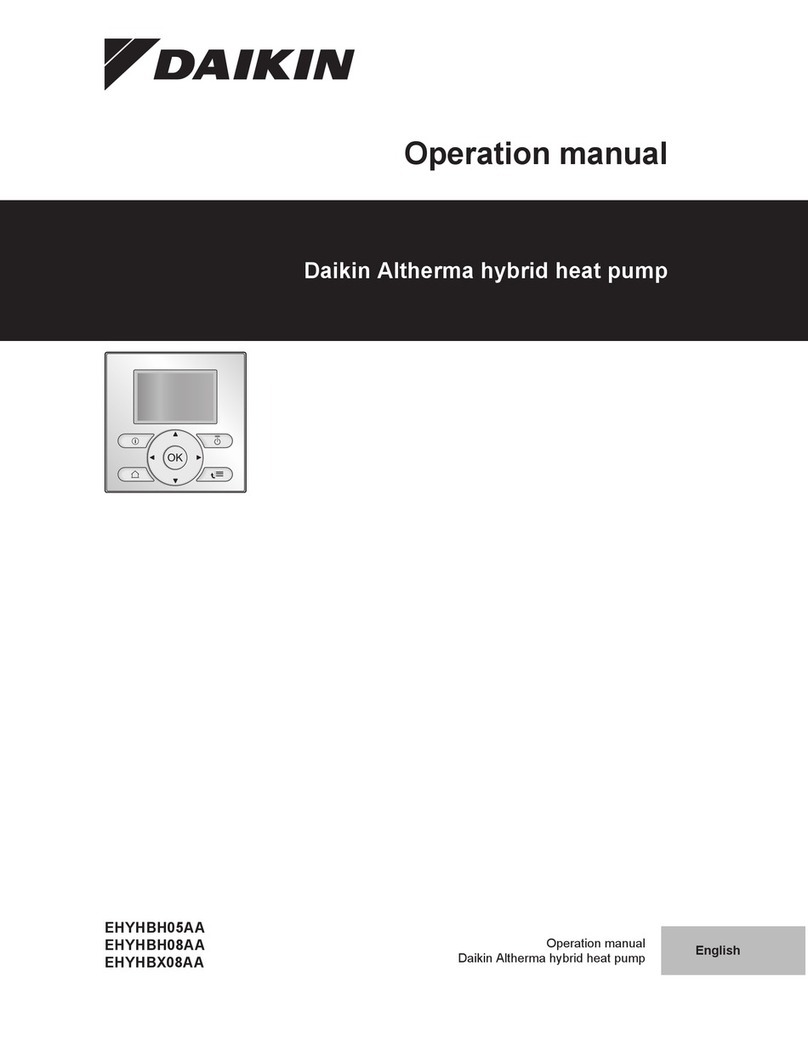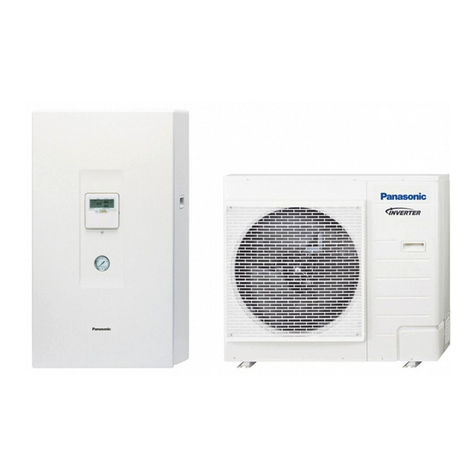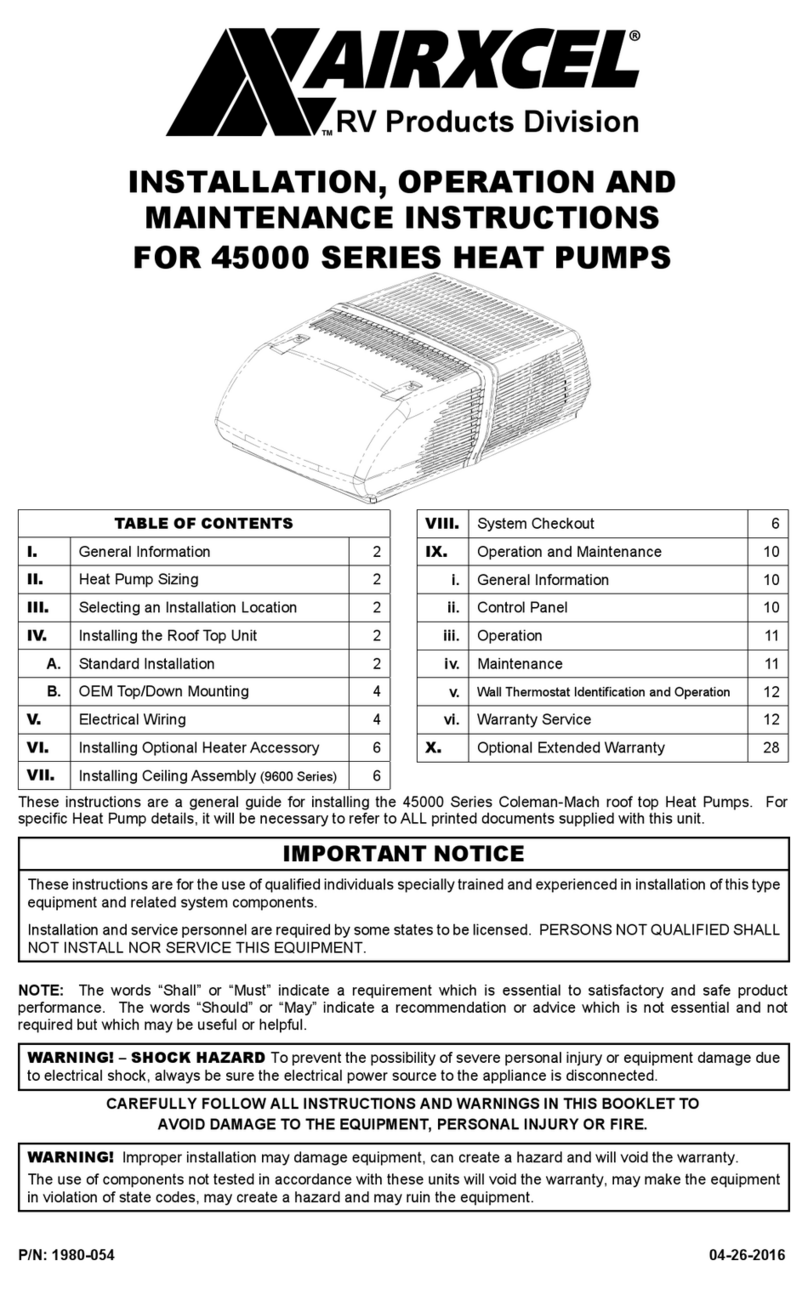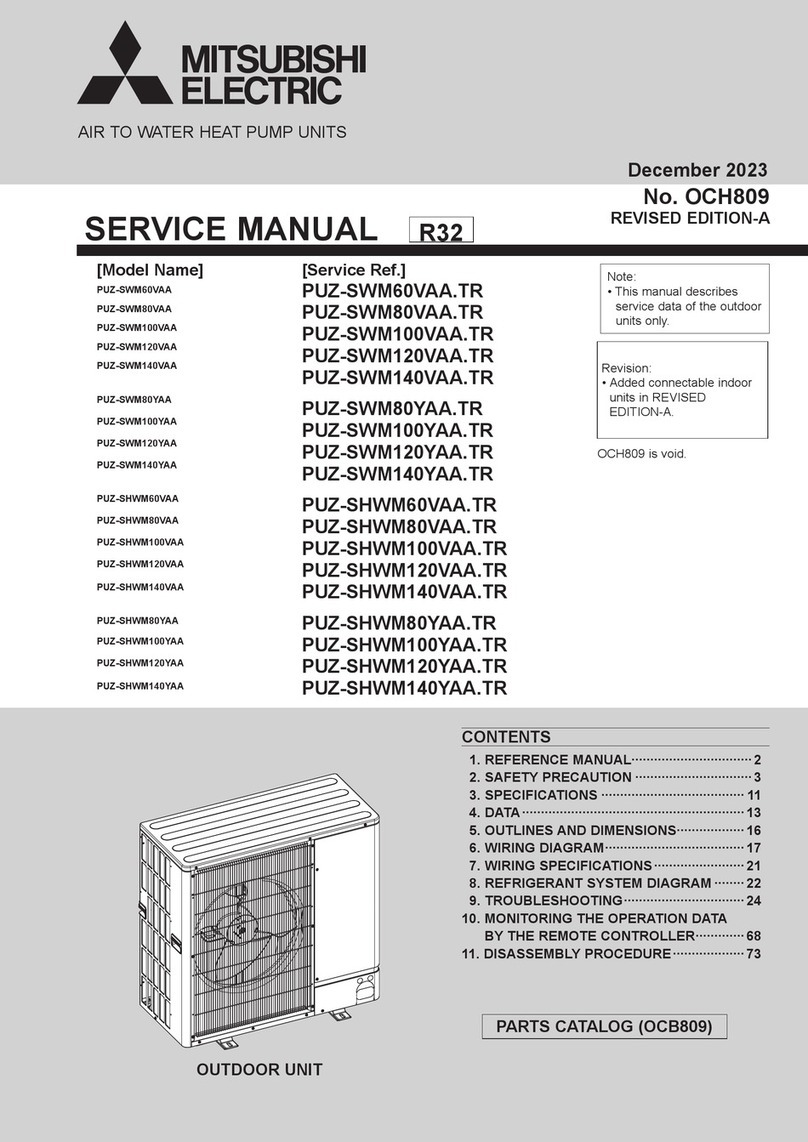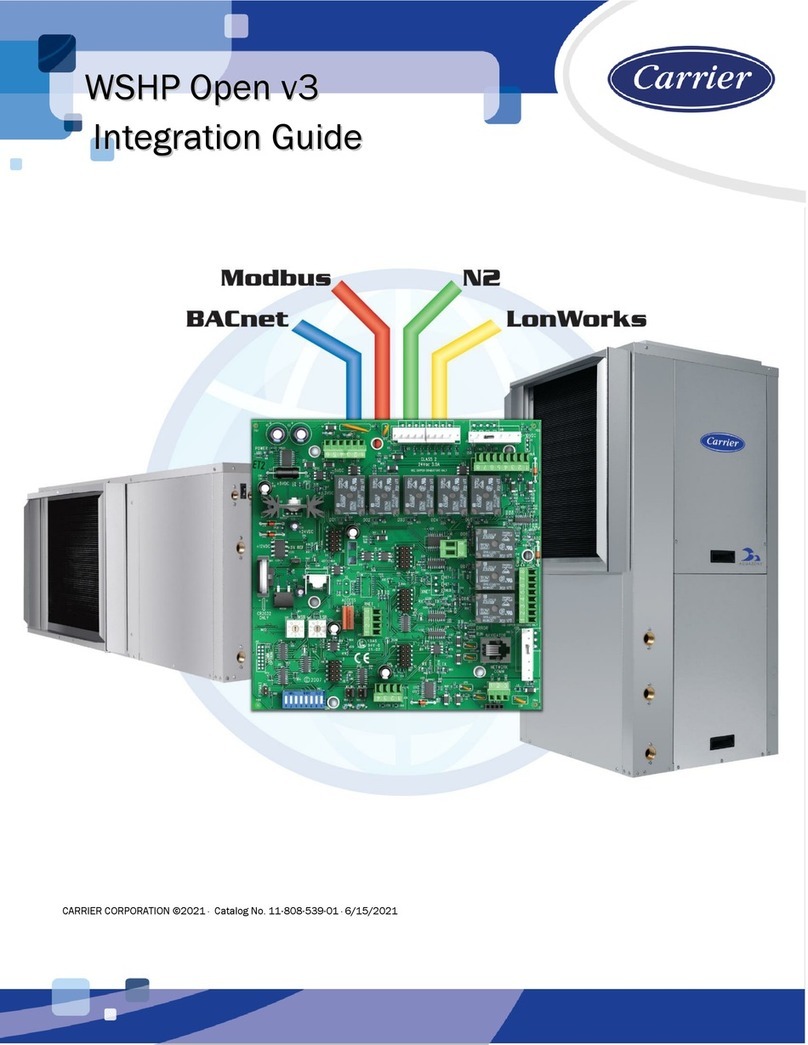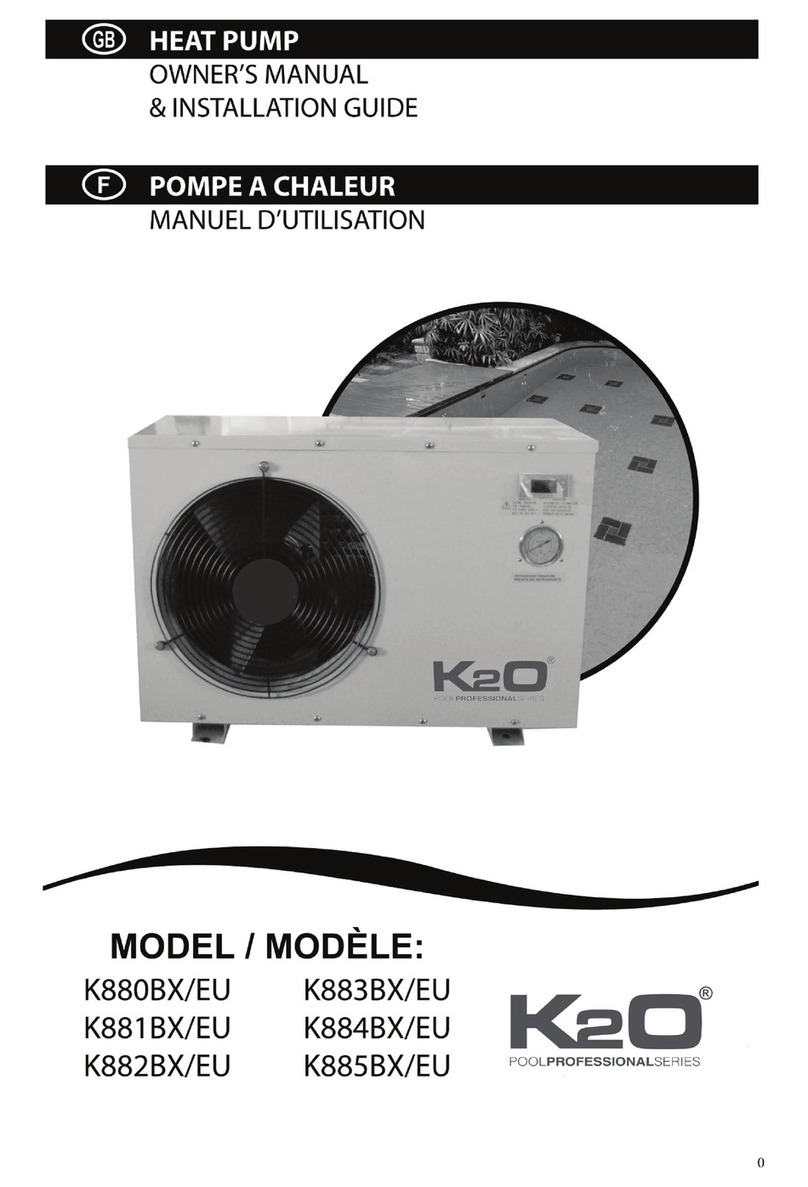
2
This heat pump contains a flammable refrigerant R32.
Any intervention on the refrigerant circuit is prohibited without a valid authorization.
Before working on the refrigerant circuit, the following precautions are necessary for safe work.
1.
Work procedure
The work must be carried out according to a controlled procedure, in order to minimize the risk of
presence of flammable gases or vapors during the execution of the works.
2.
General work area
All persons in the area must be informed of the nature of the work in progress. Avoid working in a confined area. The
area around the work area should be divided, secured and special attention should be paid to nearby sources of flame
or heat.
3.
Verification of the presence of refrigerant
The area should be checked with a suitable refrigerant detector before and during work to ensure that there is no
potentially flammable gas. Make sure that the leak detection equipment used is suitable for flammable refrigerants, is it
does not produce sparks, is properly sealed or has internal safety.
4.
Presence of fire extinguisher
If hot work is to be performed on the refrigeration equipment or any associated part, appropriate fire extinguishing
equipment must be available. Install a dry powder or CO2 fire extinguisher near the work area.
5.
No source of flame, heat or spark
It is totally forbidden to use a source of heat, flame or spark in the direct vicinity of one or more parts or pipes containing
or having contained a flammable refrigerant. All sources of ignition, including smoking, must be sufficiently far from the
place of installation, repair, removal and disposal, during which time a flammable refrigerant may be released into the
surrounding area. Before starting work, the environment of the equipment should be checked to ensure that there is no
risk of flammability. «No smoking» signs must be posted.
6.
Ventilated area
Make sure the area is in the open air or is properly ventilated before working on the system or performing hot work.
Some ventilation must be maintained during the duration of the work.
7.
Controls of refrigeration equipment
When electrical components are replaced, they must be suitable for the intended purpose and the appropriate
specifications. Only the parts of the manufacturer can be used. If in doubt, consult the technical service of the
manufacturer.
The following controls should be applied to installations using flammable refrigerants:
a.
The size of the load is in accordance with the size of the room in which the rooms containing the refrigerant are
installed;
b.
Ventilation and air vents work properly and are not obstructed;
c.
If an indirect refrigeration circuit is used, the secondary circuit must also be checked.
d.
The marking on the equipment remains visible and legible. Illegible marks and signs must be corrected;
e.
Refrigeration pipes or components are installed in a position where they are unlikely to be exposed to a substance
that could corrode components containing refrigerant
8.
Verification of electrical appliances
Repair and maintenance of electrical components must include initial safety checks and component inspection
procedures. If there is a defect that could compromise safety, no power supply should be connected to the circuit until
the problem is resolved.
Initial security checks must include:
a.
That the capacitors are discharged: this must be done in a safe way to avoid the possibility of sparks;
b.
No electrical components or wiring are exposed during loading, recovery or purging of the refrigerant gas system;
c.
There is continuity of grounding.

